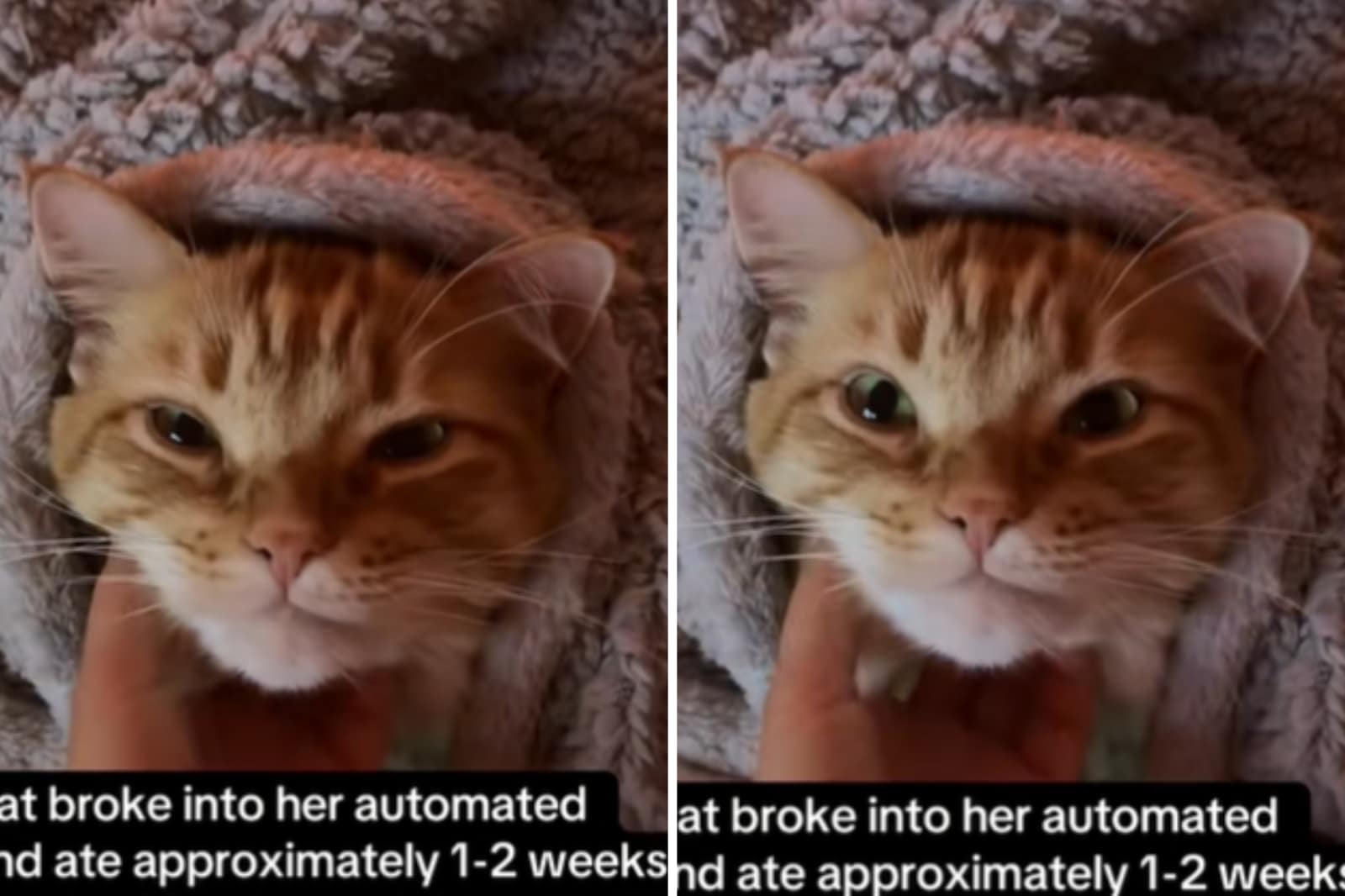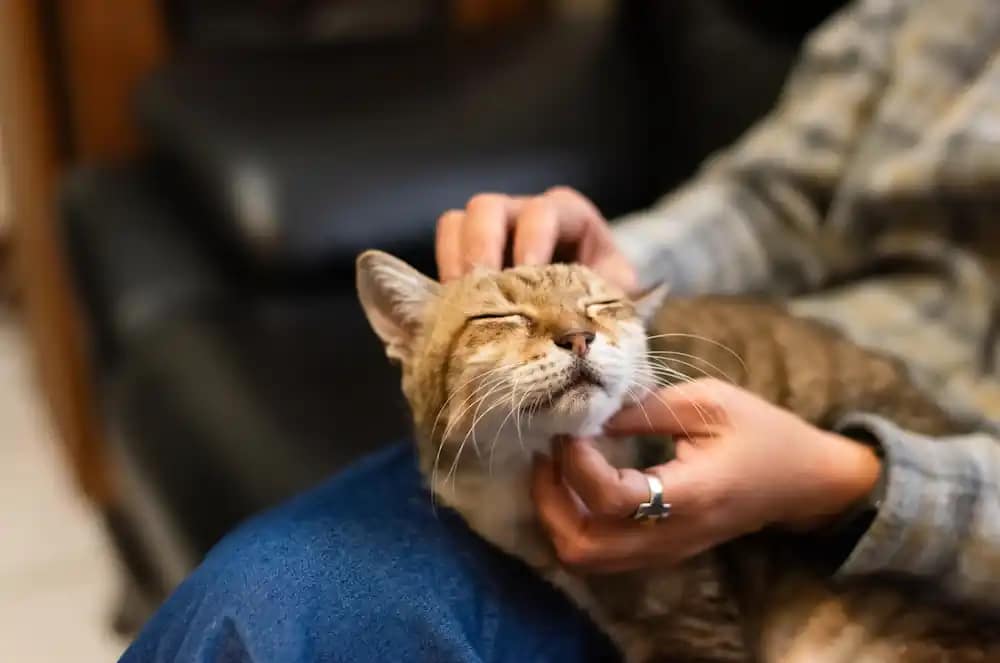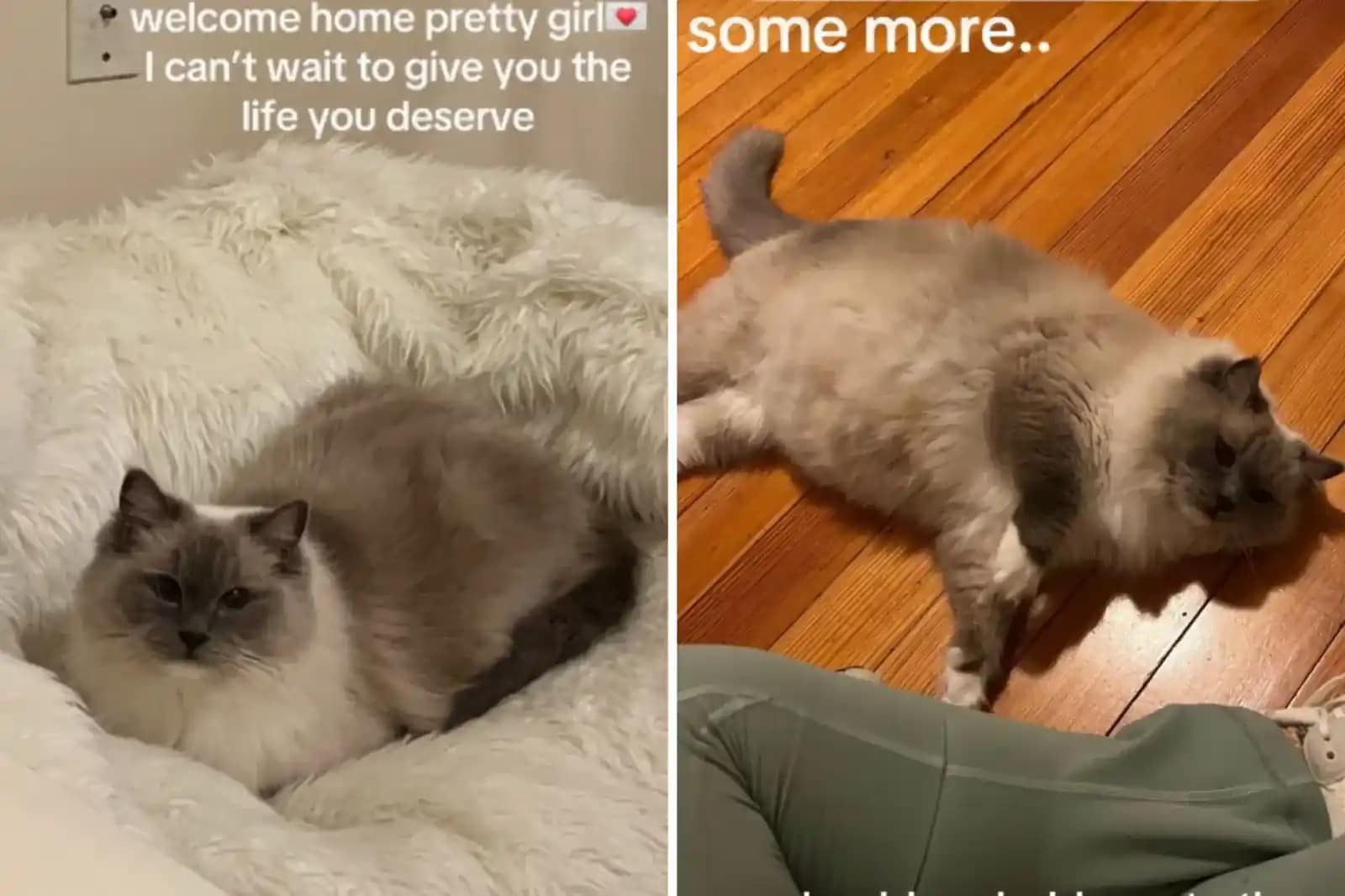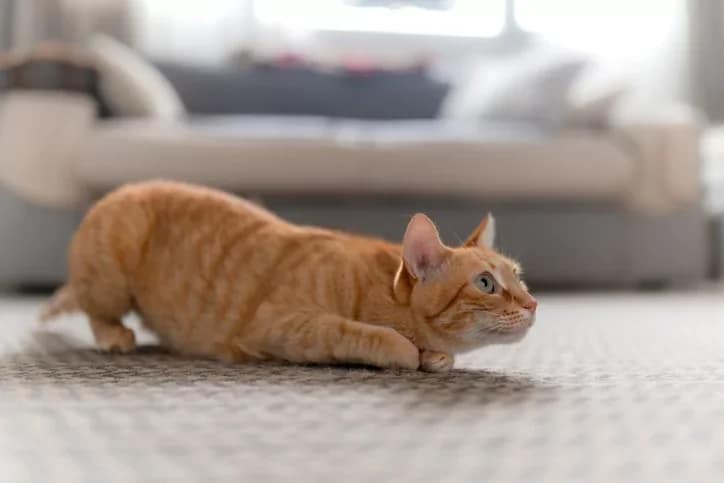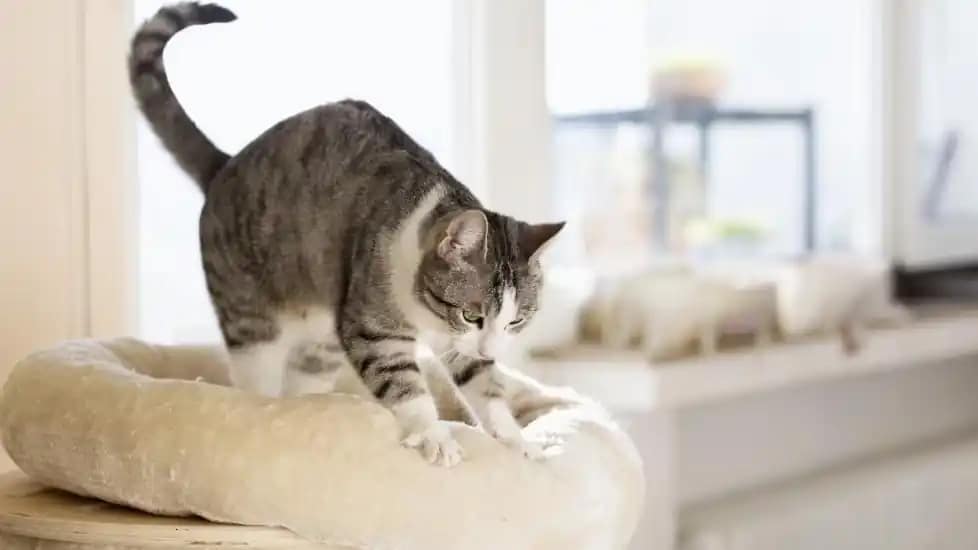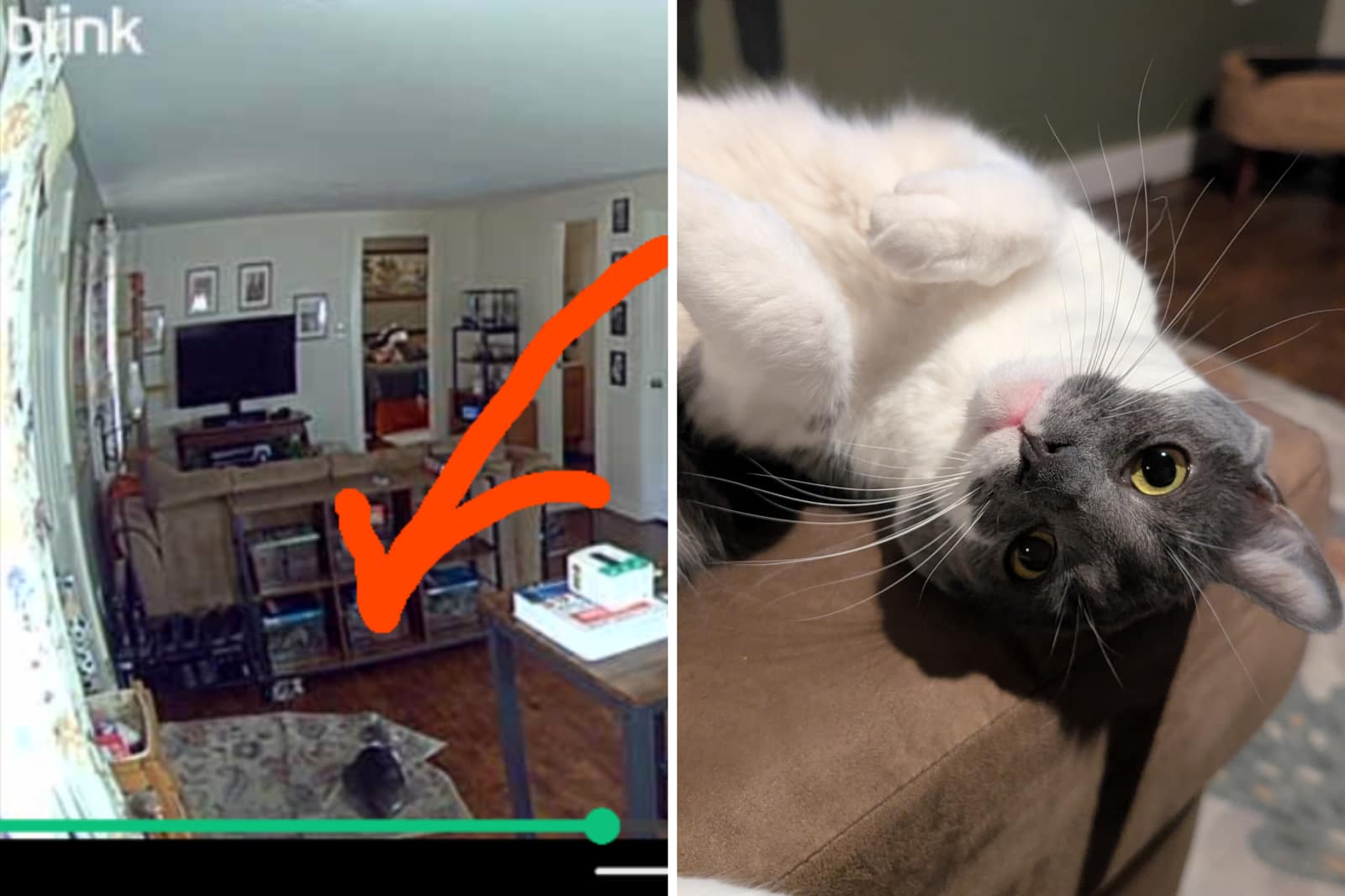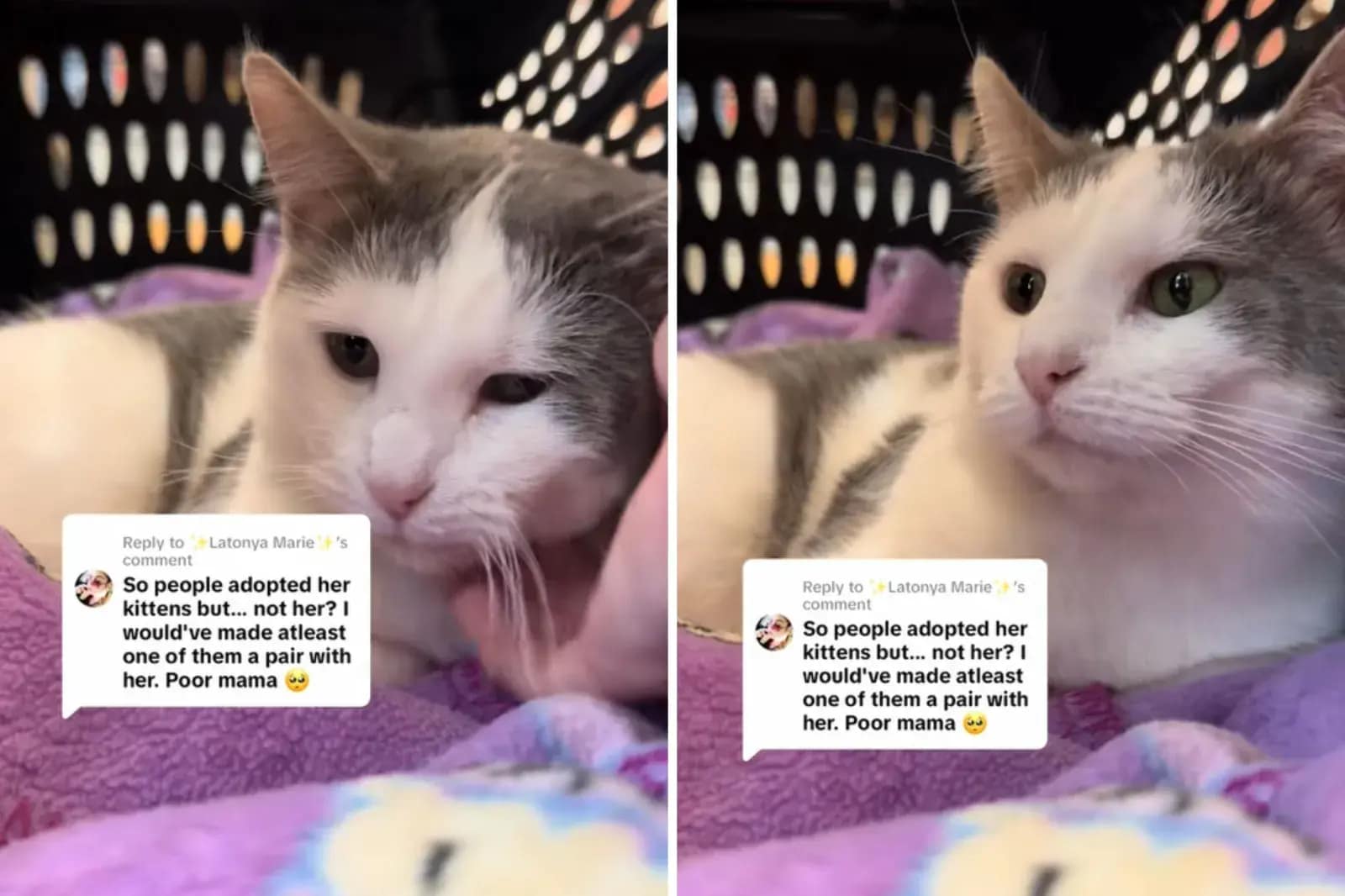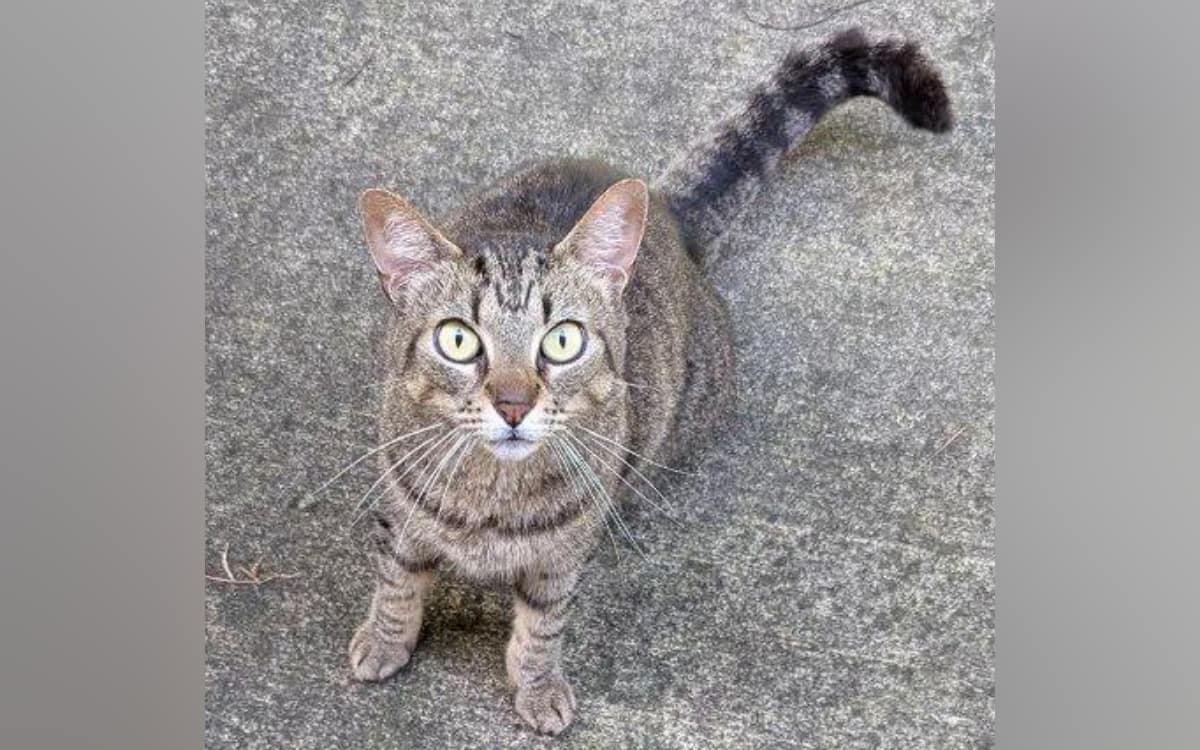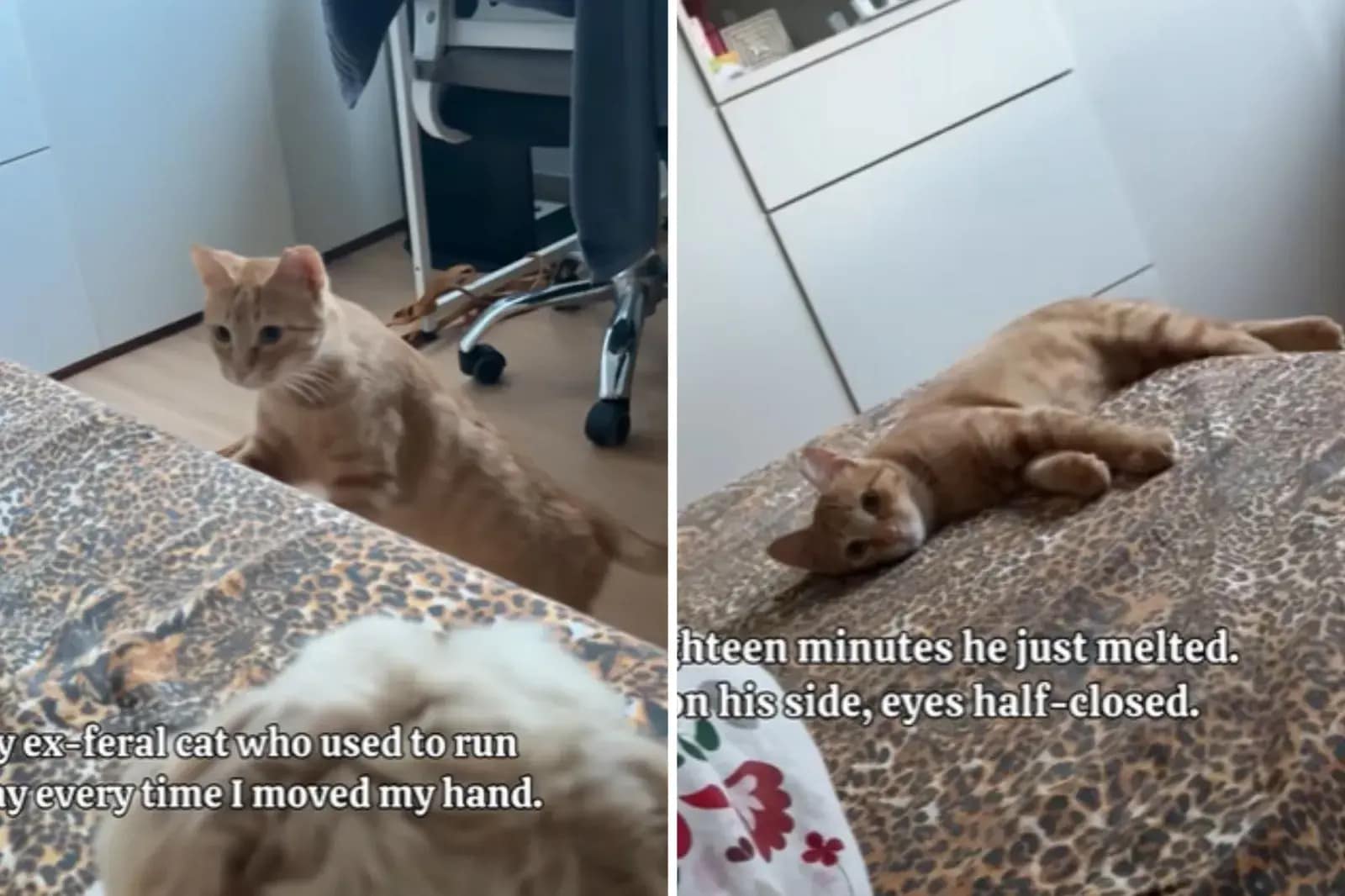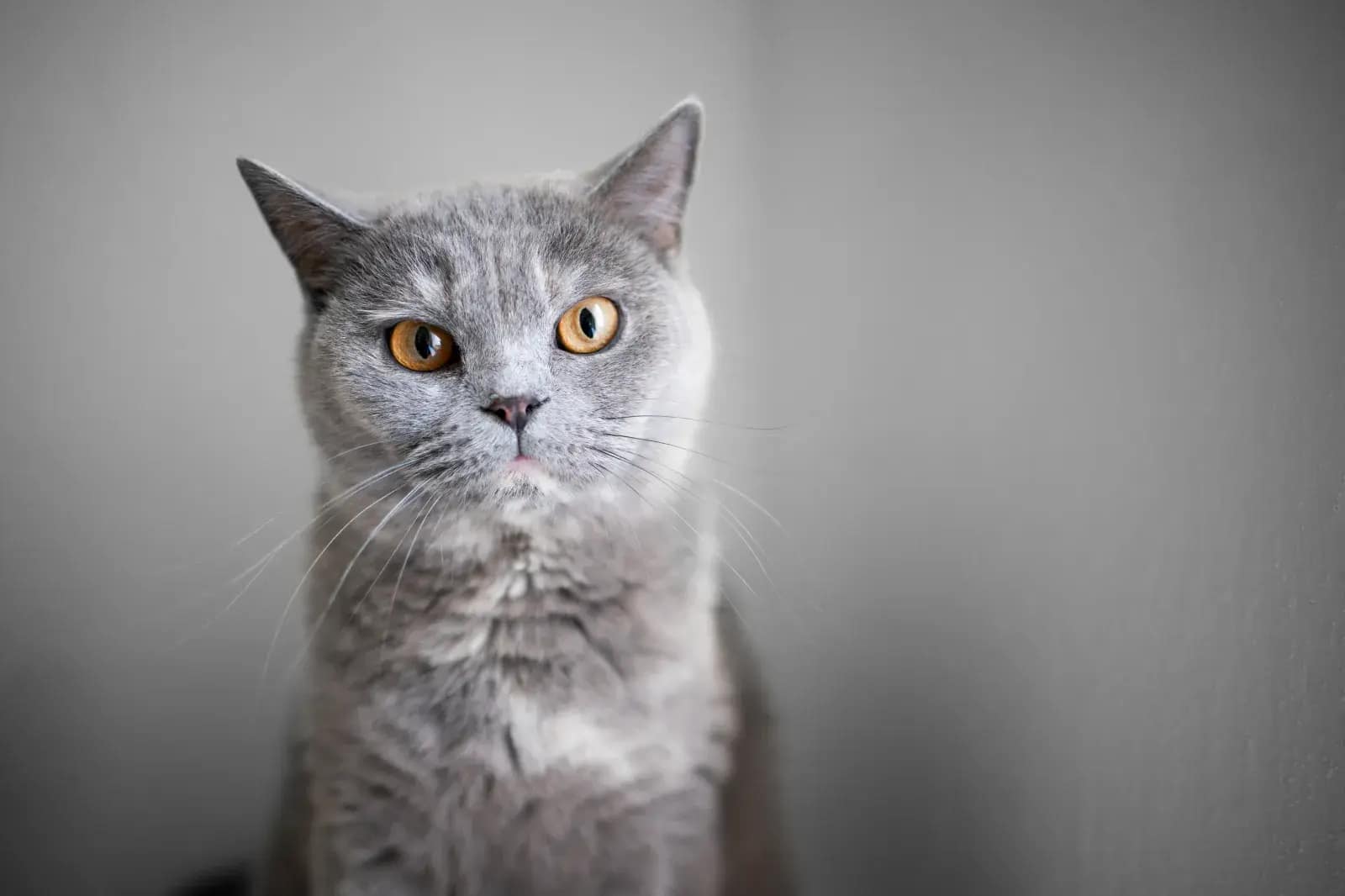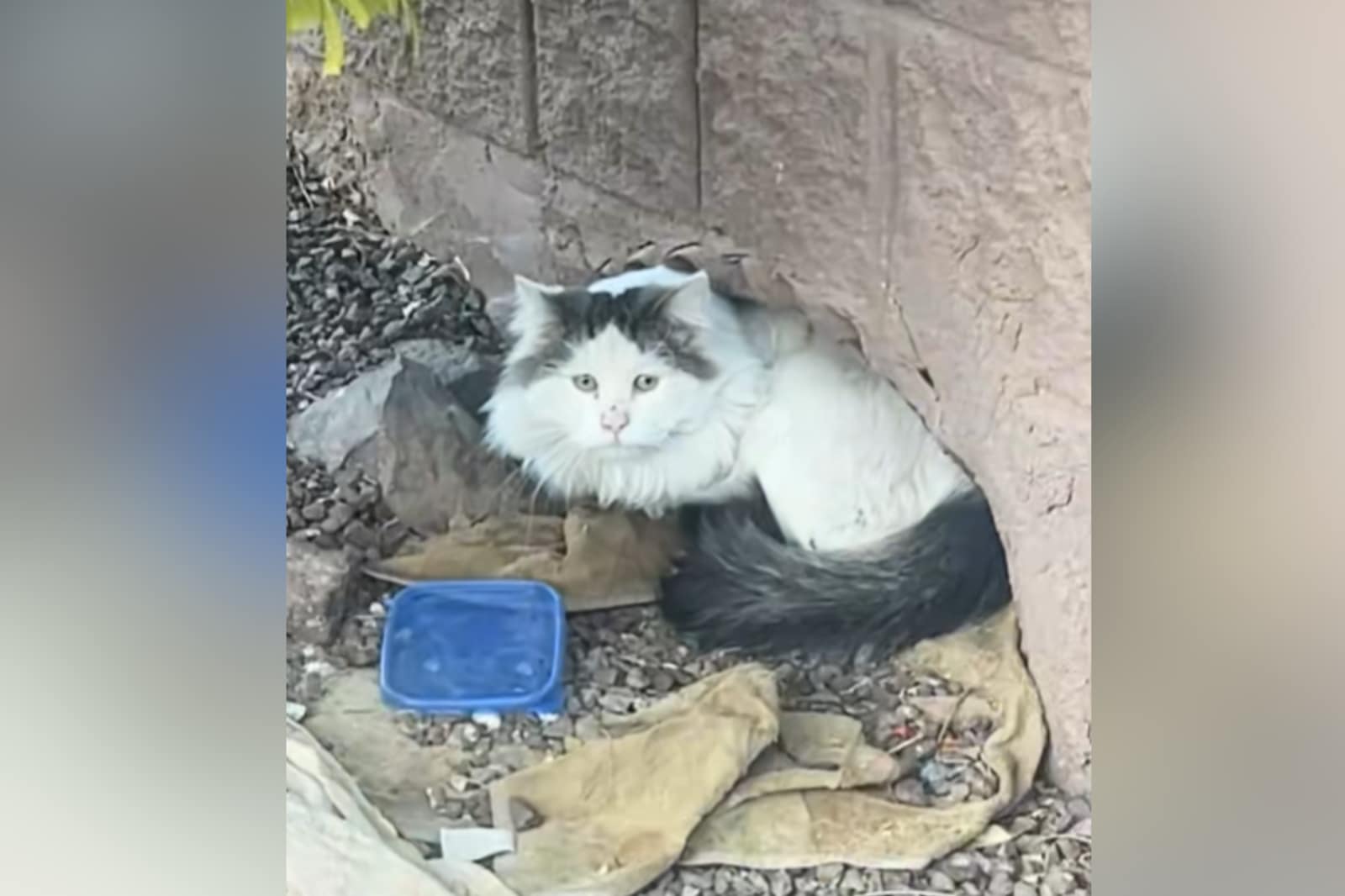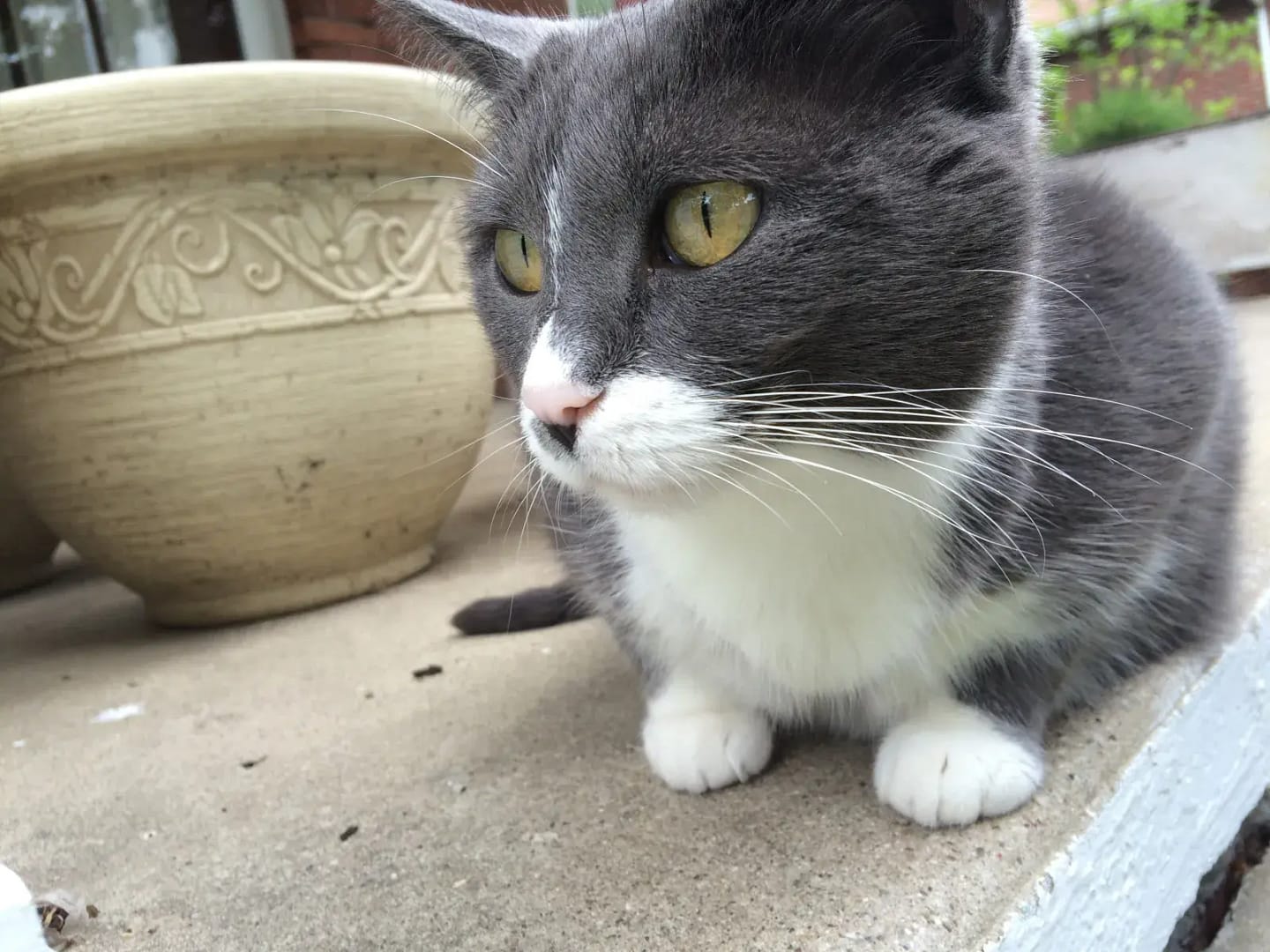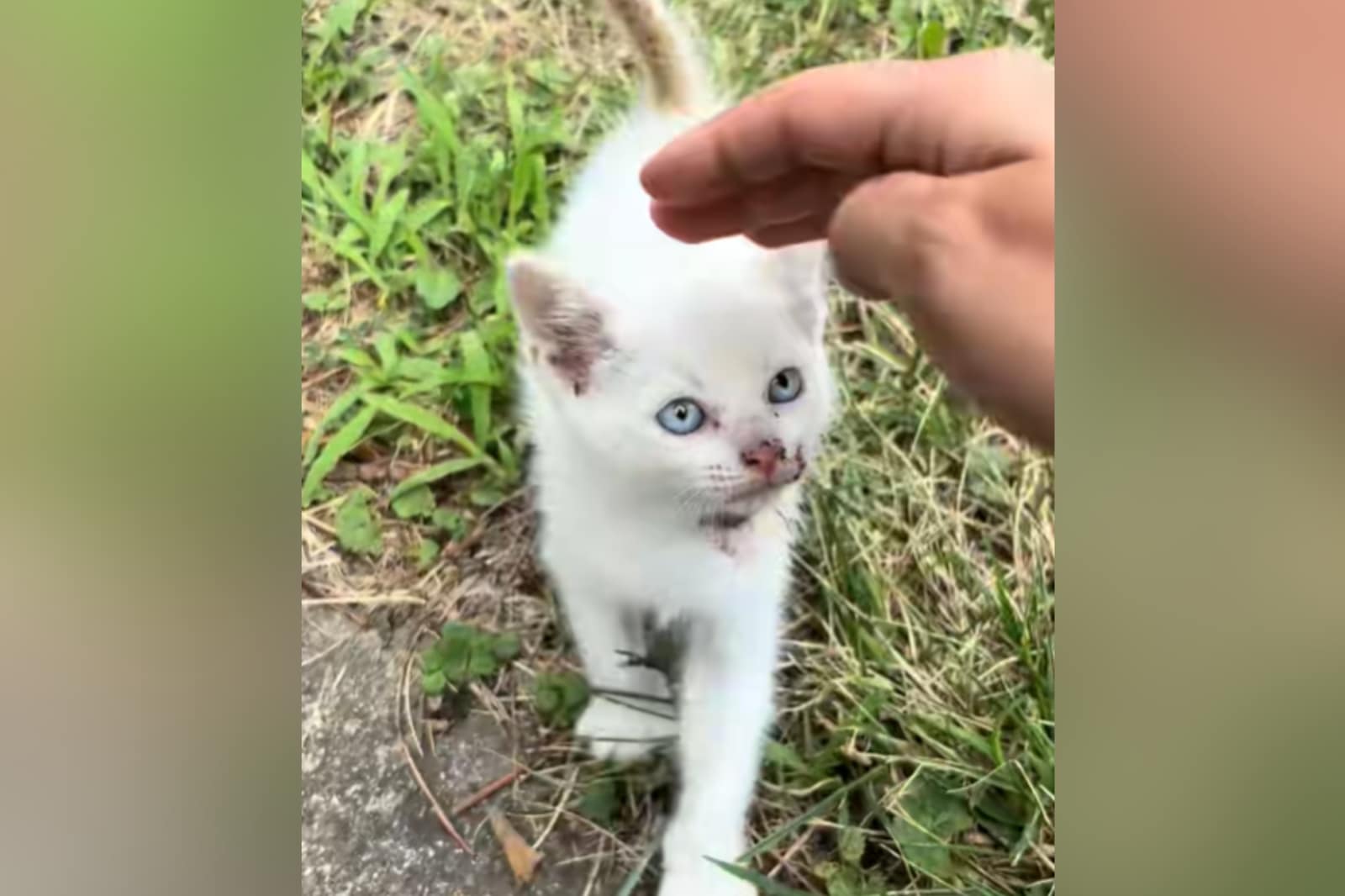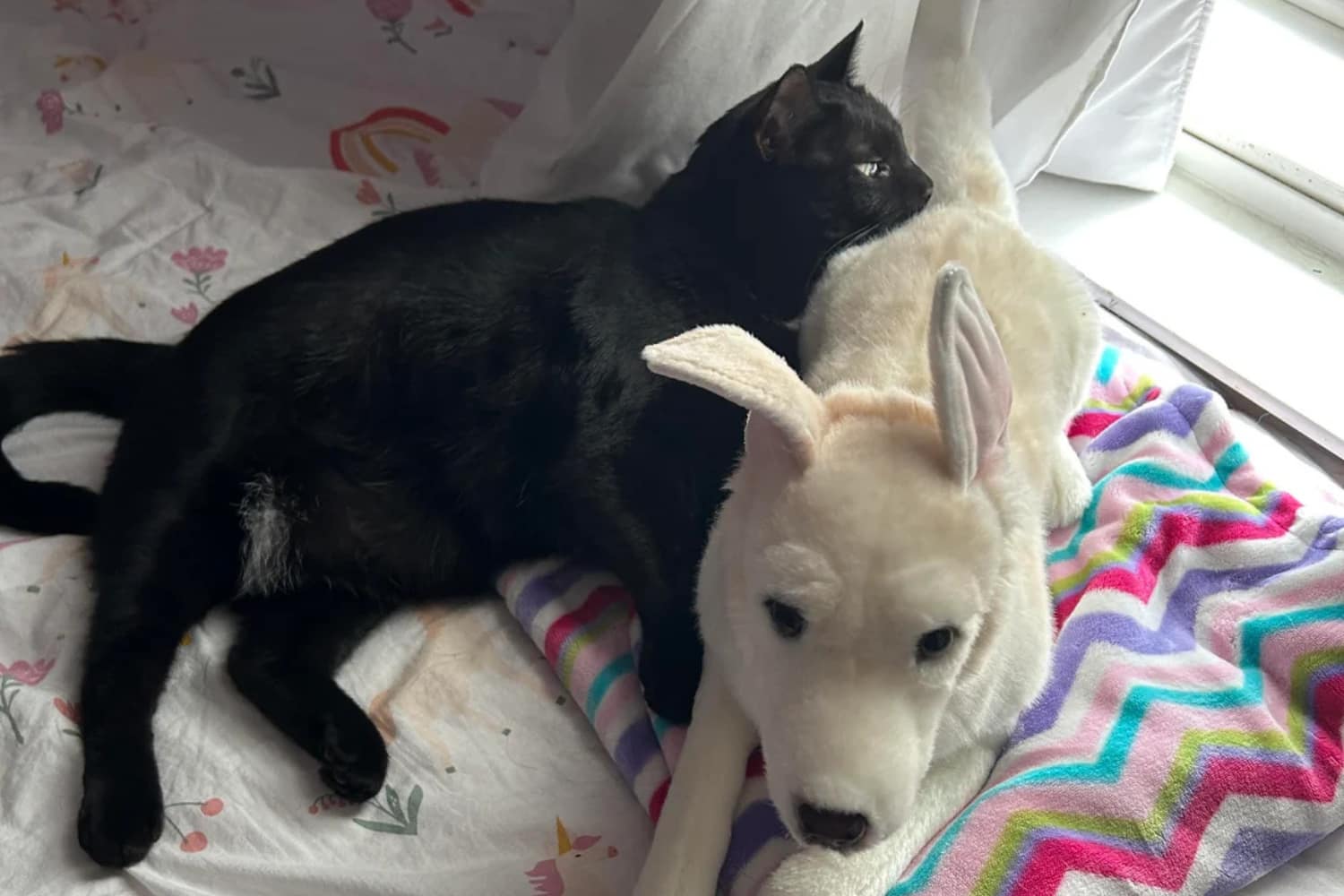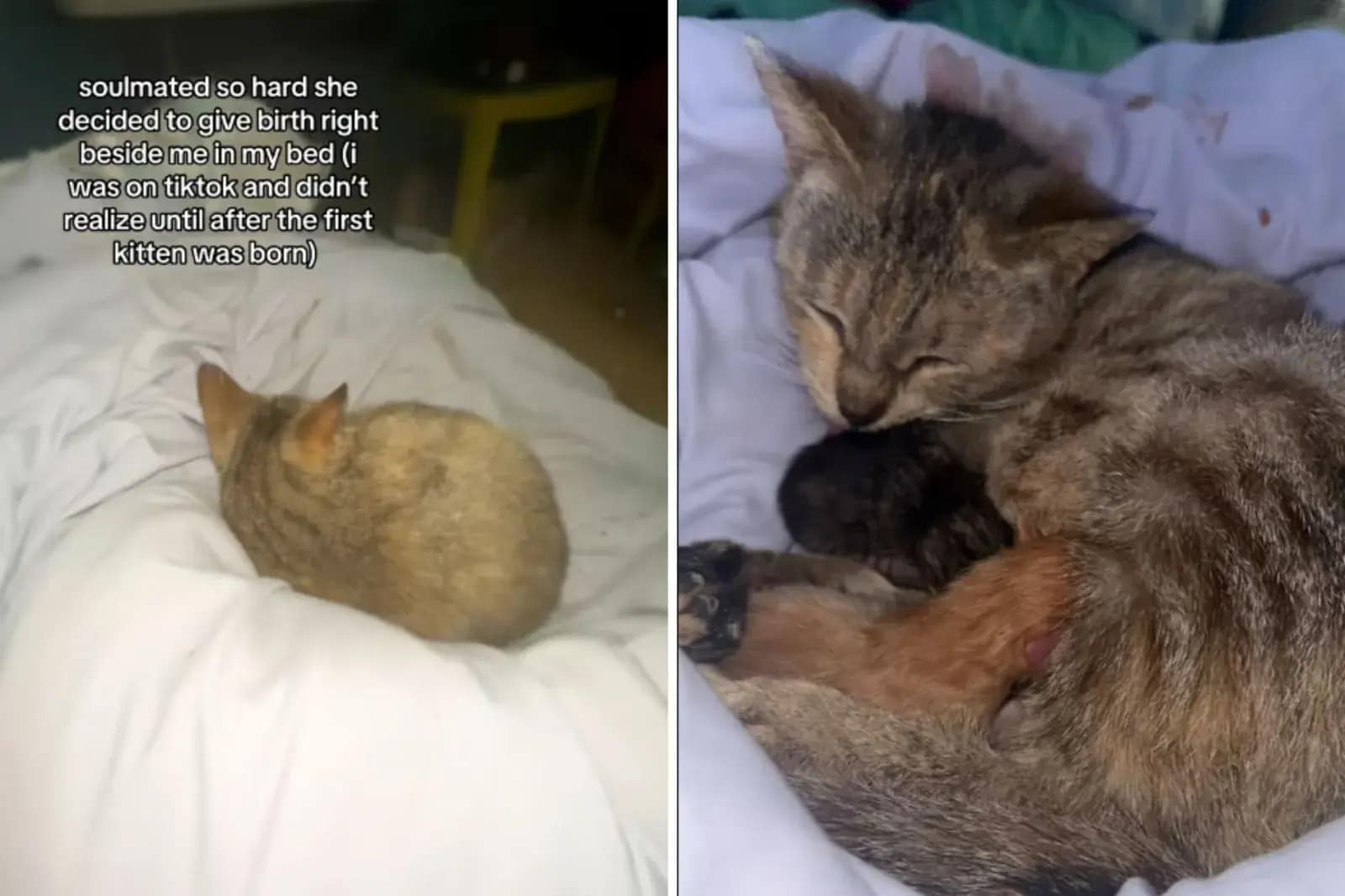As fellow cat parents, we all know that heart-melting moment when our furry overlords outsmart us—tail swishing triumphantly as they claim victory over the latest “cat-proof” gadget. But what happens when that clever caper leads to a round tummy “food baby” and a whirlwind online chat about the best way to keep our kitties fed and fabulous?
One Houston cat mom’s hilarious mishap with her automated feeder has us all nodding in recognition (and maybe chuckling at our own close calls).
Let’s dive into this whisker-twitching tale and uncover some purr-fect cat feeding tips to keep tails high and tummies happy.
Meet the Mischief-Makers: Jack, Sparrow, and Their Feeder Fiasco
Picture this: Alixandra Cassidy, a 30-year-old rescue cat devotee in Houston, Texas, has been raising her dynamic duo—Jack and Sparrow—since they were tiny, trusting kittens. Like so many of us juggling busy lives, Alixandra turned to an automated feeder to maintain that oh-so-important mealtime routine, especially during those unexpected overnight adventures away from home.
“I spotted some food insecurity early on,” she shared with Snugglesouls. “They’d scarf down their wet and dry kibble like it was going out of style and even eye up table scraps—total dog vibes! The automated feeder became our hero for portion control, helping them ease into a steady groove.”
Fast-forward four years, and these food-loving felines have occasionally tested the feeder’s limits with breakout attempts. But this time? Sparrow took it to legendary levels. In a single overnight escapade, she demolished one to two weeks’ worth of kibble. Alixandra caught the aftermath on video for her TikTok (@alixandracass), posting on August 22: a cozy, blanket-wrapped Sparrow looking blissfully bloated, followed by a gentle lift revealing her epic “food baby” belly.
What started as a lighthearted share exploded into viral gold—over 7 million views and 1 million likes later. But beneath the laughs? A lively debate on cat feeding methods that’s got every pet parent pondering their own bowls.
@alixandracass forgive a girl for wanting a snack! edit: sparrow is 1/2 Maine Coon 🐈! This breed is notorious for overeating lol. Unfortunately, she is not able to self regulate and free feed so automated feeders work best for us to keep her healthy and fit. She threw up and is feeling much better now. But she will never forget this glorious day. @Hill’s Pet Nutrition any tips? She loves your food a little too much. 😆#fyp
♬ Sweet but Psycho – Ava Max
The Great Cat Feeding Debate: Free Feeding vs. Scheduled Meals—What’s Right for Your Feline Friend?
If you’ve ever scrolled pet forums (guilty as charged), you know feeding philosophies can spark more fireworks than a laser pointer chase. Sparrow’s heist turned the comments section into a virtual town hall, with cat parents passionately weighing in on free feeding (food always available) versus timed portions.
Voices from the Bowl: Free Feeding Fans Weigh In
One commenter championed the always-full-bowl approach: “I’ve free-fed my cats forever—no food motivation drama here. They graze when hungry because they conozca it’s always there. Healthy weights, zero interest in human snacks—it’s a win!”
Another chimed in with a nod to nature: “Cats are predators at heart; they don’t binge in the wild. Free feeding honors that instinct, letting them nibble without overdoing it.”
These free-feeders swear by the peace of mind: flexible schedules for multi-cat homes, less stress for shy eaters, and that freeing “set it and forget it” vibe for busy humans.

The Flip Side: When “All You Can Eat” Meets Feline Frenzy
Not everyone was on board. A counter-comment hit hard: “Folks pushing free feeding haven’t met a truly boundary-free cat. Mine inhales meals without chewing, even on a four-times-a-day schedule—it’s greed on steroids!”
Echoing this, experts highlight the risks. According to Purina’s pet nutrition insights, while free feeding offers perks like schedule flexibility and comfort for anxious kitties, it comes with caveats:
- Tracking troubles: Hard to monitor exact intake, missing subtle shifts that could signal health hiccups.
- Obesity alert: Unlimited access can tip the scales toward extra pounds— a common cat health news concern affecting up to 60% of indoor felines.
- Boredom blues: Constant bowl-staring can lead to stress-eating or mischief (hello, feeder hacks!).
Expert Insights: Feeding Like a Feline in the Wild
We reached out to Dr. Maggie Placer, DVM, from the EveryCat Health Foundation, for her take on feline nutrition advice. “Cats are wired for the hunt—think 10-20 tiny meals a day from stalking prey,” she explains. “Dumping food in one spot all day? It can breed boredom, overeating, and even household squabbles in multi-cat crews.”
Dr. Placer’s pro tips for mimicking Mother Nature?
- Puzzle power: Swap plain bowls for interactive feeders that make mealtime a game—boosting mental stimulation and slowing scarf sessions.
- Forage fun: Hide portions around the house to encourage that exploratory spirit.
- Multi-cat musts: Give each kitty their own bowl (food, water, and litter zones separate, of course) in safe, low-stress spots.
- Portion playbook: Divide daily kibble into 4-6 mini-meals spread over 24 hours to curb begging and keep energy steady.
The payoff? Happier, healthier cats with less frustration and fewer inter-feline turf wars.
From Feeder Fail to Feline Wellness Win: Alixandra’s Updates
Alixandra admits she hadn’t overthought her setup before Sparrow’s big score. “I figured automated feeders were the norm—easy peasy!” But the viral buzz prompted a rethink. Now, she’s hand-feeding Sparrow in slow-release puzzles to dial down any anxiety-fueled binges and spark some play. “It’s fostering curiosity without the chaos. Free feeding? Maybe not our jam yet, but this feels right for us.”
Her story reminds us: What works for one whiskered wonder might need tweaking for another. As cat parents, tuning into our pets’ cues—those pleading meows or midnight munchies—is key to tailored care.
Wrapping Up: Your Takeaway for a Tail-Wagging (or Twitching) Mealtime Routine
Sparrow’s feeder triumph is a hilarious reminder that our clever cats keep us on our toes—and that’s part of the joy. Whether you’re team timed portions or gentle grazers, the real win is a feeding strategy that matches your cat’s vibe, keeps them at a healthy weight, and minimizes mishaps.
Quick Action Steps for Pet Parents:
- Assess your setup: Is boredom or anxiety driving the drama? Try a puzzle feeder today.
- Monitor monthly: Weigh-ins and habit checks catch issues early.
- Consult your vet: Personalized feline nutrition advice is gold.
For more on keeping your kitty’s belly balanced, check out our guides on best puzzle feeders for cats and spotting early signs of cat obesity.
PREGUNTAS FRECUENTES
What’s the difference between free feeding and scheduled feeding for cats?
Free feeding means food is always available for grazing, mimicking wild nibbling but risking overeating. Scheduled feeding uses timed portions (like automated feeders) for control, helping track health but requiring routine.
Can free feeding lead to obesity in cats?
Yes—unlimited access often does, especially for indoor cats with low activity. Aim for portion control to keep your feline at an ideal weight; consult cat health news from vets for breed-specific needs.
How can I stop my cat from overeating or begging?
Mimic hunting with puzzle feeders and scattered meals. Split daily kibble into 4-6 small servings to satisfy instincts without excess. If anxiety’s at play, slow feeders can help.
Are automated feeders safe for multi-cat households?
They can be, but separate bowls in safe spots prevent fights. Monitor for “break-ins” like Sparrow’s—opt for tamper-proof models and add foraging elements for fairness.
When should I switch my cat’s feeding routine?
If you notice weight changes, excessive begging, or health red flags, chat with your vet. Tweaks like hand-feeding or puzzles can reduce stress, as Alixandra found.

